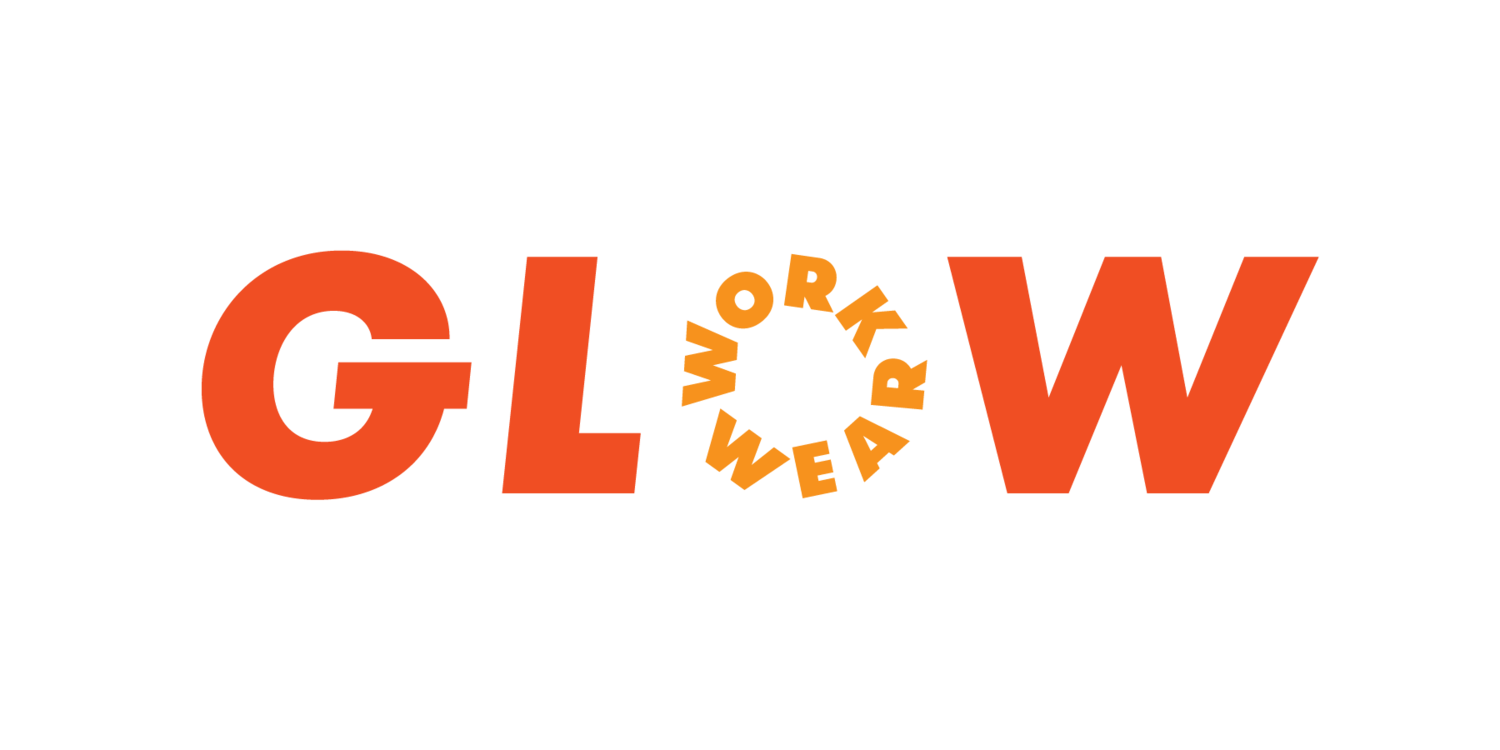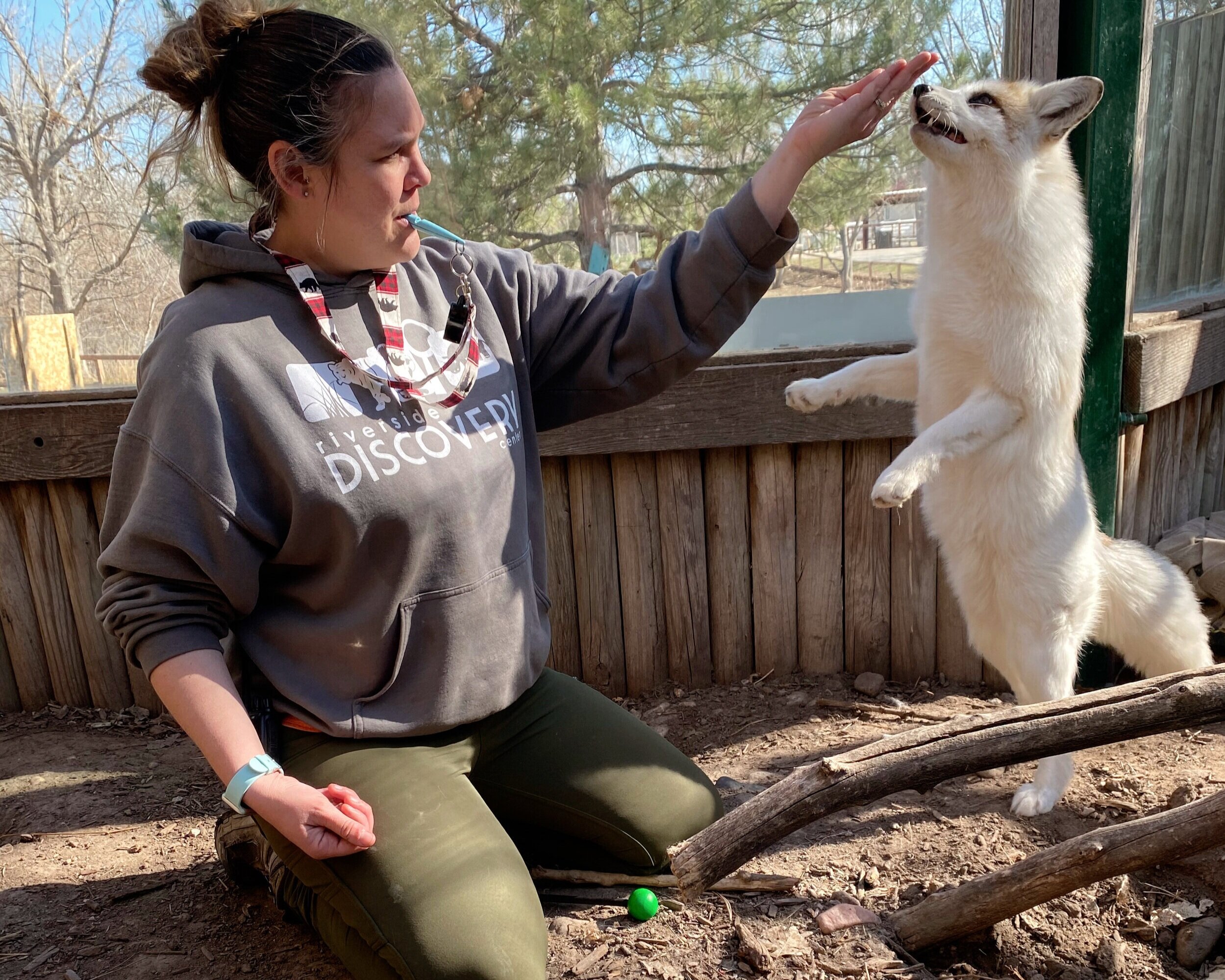Zoo Keeper | Alexandra M.
Alexandra Mason
Educational Curator/Lead Keeper and Frogwatch Coordinator
Riverside Discovery Center
Originally from Tampa, Florida, Alexandra Mason’s passion for animals started at a young age. After graduating from University of West Florida with a Bachelor’s degree in Zoo Science, Alex landed her first zookeeping position at Lubee Bat Conservancy in Gainesville, Florida, where she fell in love with bats, discovered her passion for education, and even met her husband. After four years of working at Lubee, she accepted her current role as Education Curator/Lead Keeper at Riverside Discovery Center. Working for Riverside has given her the amazing opportunity to lead keeping staff, work with education, and deepen community connections.
Tell us more about your background and how you became an Educational Curator/Lead Keeper.
My name is Alexandra Mason, and I am from Tampa Florida, my passion for animals started at a young age. I knew I wanted to work with animals but didn’t know in what capacity. I didn’t know if I wanted to go into fieldwork or take care of animals.
My best friend’s father was a zookeeper at Tampa Bay’s Bush Gardens and talked to me about this job, I found it interesting, fascinating and didn’t know how much research zookeepers actually did. He told me to enroll at Santa Fe Teaching Zoo in Gainesville, Florida. A 2-year school dedicated to teaching students the inner workings of zoos through husbandry training, education, community engagement, and the important conservation work zoo’s in general do. What makes Santa Fe Teaching Zoo unique is that they have an actual working AZA-accredited zoo that students take care of everyday, and yes, even on weekends, holidays, and in between school breaks.
I received my bachelor’s in Zoo Science from the University of West Florida in Pensacola, Florida, where I was able to help out with ongoing field research. (I found out I liked both fieldwork and keeping, and as any young professional, you want to do it all!)
After graduation, I got my first zookeeping position at Lubee Bat Conservancy in Gainesville, Florida. It was at Lubee, I found my love for both bats and education (it was also the place where I met my husband). Lubee gave me the opportunity to do an education-related research project about the importance of bat education in AZA-accredited zoos, and I was even given the opportunity to present it at an AZA conference in 2014.
After 4 years at Lubee Bat Conservancy, I obtained the position of Education Curator at Riverside Discovery Center in 2017. There, I was able to build education programs and enhance our community engagement with my community. Since I had a strong keeping background, I was given the opportunity to lead the keeping staff as the lead keeper. Since Riverside Discovery Center is a small facility, I was able to keep my position as Education Curator.
Describe a typical day working at Riverside Discovery Center Zoo and Splash Pad.
A typical day at Riverside Discovery Center is the keepers that day have a morning meeting to go over any medical issues, basic observations, and specific projects that need to get done that day. The keeping team breaks up into 3 groups; Area 1, Area 2, and Area 3 and we check the animals that are in our area. Each keeper gives out morning medications (if needed), feeds breakfast, cleans exhibits, and gives out enrichment for the animals. Enrichment is an item, smell, new toy, new food item, etc. that is given to an animal to stimulate them in their environment. Our male tiger loves pumpkin spice body spray from bath and body works to encourage scent marking and our grizzly bears love when we put peanut butter smears all over their water tower to encourage climb.
The keeping team gets back together around 11:45 am for chimpanzee training (there are 5 chimpanzees so the more hands to help train specific individuals the better). After chimpanzee training, the keepers go to lunch or finish cleaning their areas. After lunch the keepers work on independent training of different animals- I train our marble fox Kit and our Plains zebra. Another colleague of mine trains the macaws and north American porcupine. We will prep new and/or complex enrichment, update animal paperwork and protocols (the boring lead keeper duties), prep weekly vet rounds, keeper talks, animal ethograms to observe any behavior change or see how the animals utilize their area, and fun stuff like spending time with our animals or painting with them (it is always voluntary and some animals like the feel of paint between their toes).
Since I am the lead keeper and Education Curator, I will use my extra time during the day to communicate with the education department on how the month or week looks and if they need any assistance from myself or the keepers. I absolutely love my team as they are always willing to help, and as a small AZA-accredited facility, it is nice to have those extra hands. At 2:30 p.m., the keepers will get together to do grizzly bear training and keeper talks. After that, we start getting diets together, tomorrow’s enrichment together, and stock up areas if needed for the next day. We do work 10 hours a day, which means we get 3 days off (woohoo!).
Did you face any obstacles along the way? If so, how did you handle them?
The number one obstacle we face in the zoo field is the small staff. We are able to get everything done by cross-training, keeping staff to help out with extra duties. Some keepers input animal records into ZIMS which is a Zoological Information Management System, where we can access animal records on the fly anywhere. Others are in charge of enrichment coordinating to make sure our enrichment program is at that high-level standard, and we don’t miss any animals’ birthdays (yes, all animals get birthday parties). Another keeper coordinates all our interns, and also makes sure our hospital is stocked up and we are up to date in our dart training.
What do you enjoy most about working in the zoo field?
I enjoy the fast pace the zoo field is, every day is different and the bonds you create with the animals is like nothing else.
It is that moment when you share your favorite animal with a guest and that they come back with a better understanding of that animal’s role in our environment and they no longer think that animal is scary. Those are my all-time favorite moments and why I love the education side as well as the animal care side.
What do you feel is most important for the public to know about animals and conservation?
That every animal serves an important role (charismatic or not) in our environment and if that animal was to disappear the ecosystem can collapse. Take my favorite animal bats- they are facing many challenges and some are on the verge of extinction. Challenges include culling because they think they are a nuisance, white-nose syndrome (deadly fungus) taking bats out by the millions, and being hunted as bushmeat (this is how deadly viruses are spread). Conservation of bats is extremely important without bats we wouldn’t have specific plants (as bats pollinate over 530 different plants around the world) which means specific fruits and vegetables we eat wouldn’t get pollinated, they eat their weight of bugs a night (we would be overrun by bugs) and microbats (little insect-eating bats found in the USA) fecal are an amazing fertilizer as it is high in nitrogen.
What advice would you give to young girls interested in working in the zoo field?
My advice for young girls will be. . . if zookeeping is what you want to do, get involved in your local zoo now. See if there is a teen program, if you can volunteer, or do a keeper for a day program to see if this is the right program for you. Zookeeping is also a highly competitive field run by women.






